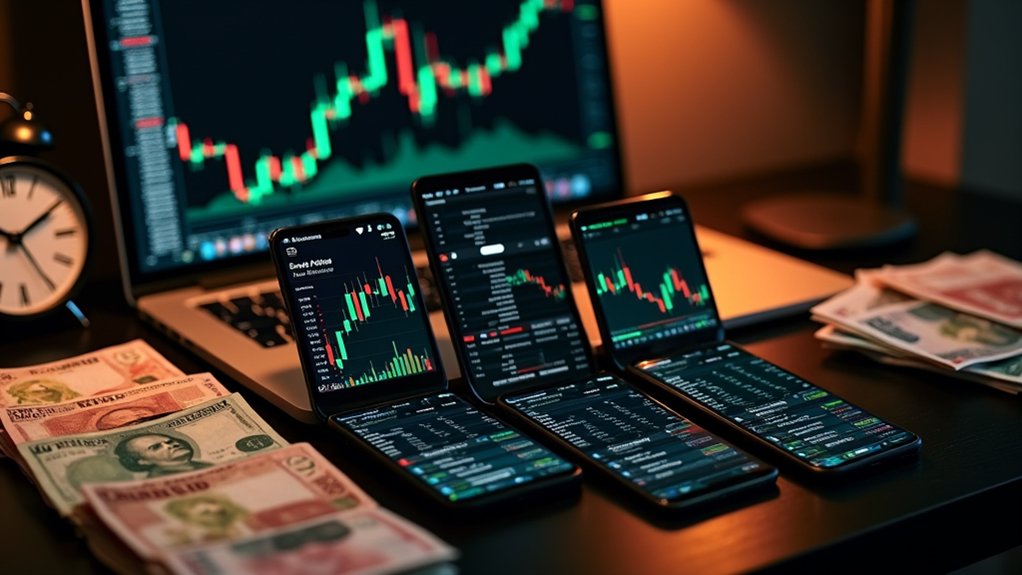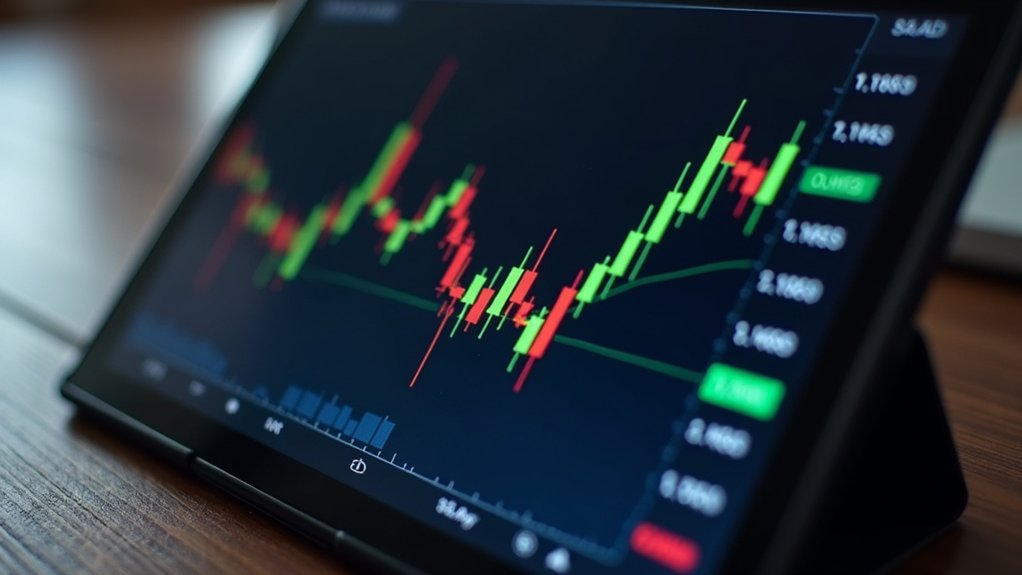The forex spread—the gap between bid and ask prices—is the first cost every trader pays, often without realizing it. A two-pip spread on EUR/USD might seem tiny until it's multiplied across dozens of trades on standard lots, where each pip costs real money. Fixed spreads offer predictability but run higher, while variable spreads tighten during calm markets then explode during volatility. Major pairs like EUR/USD keep spreads tight thanks to deep liquidity, but emerging market pairs bleed traders dry with wider gaps that add up fast and silently erode capital with every position opened.

Every forex trader in Africa—from Cairo to Cape Town, Lagos to Nairobi—faces an unavoidable reality the moment they click buy or sell: the spread. It's not a tip. It's not optional. It's the built-in cost of doing business, and it starts eating into profits before a trade even moves.
The spread isn't negotiable—it's the price of entry, eating into profits before a trade even moves.
The spread represents the difference between the ask price and the bid price of a currency pair. Simple math. If GBP/USD quotes at 1.3089/1.3091, the spread equals 1.3091 minus 1.3089. That's 0.0002, or two pips. For most pairs, one pip equals 0.0001—the smallest price movement in the fourth decimal place. Japanese yen pairs work differently, quoting to only two decimal places. USD/JPY at 110.00/110.04 shows a four-pip spread.
Spreads come in two flavors: fixed and variable. Fixed spreads stay constant regardless of what the market does. A Kenyan trader gets predictability. A Nigerian trader can plan around known costs. But that stability comes at a price—fixed spreads tend to be higher because brokers factor in their profit margin upfront. They also risk limited liquidity during high-volume periods, which can trigger slippage and delayed execution.
Variable spreads fluctuate based on market conditions and liquidity levels. Brokers offering these typically connect to the interbank market through ECN or STP systems. When markets are calm, variable spreads can be lower and more transparent. When volatility hits—say, during a central bank announcement in South Africa or Egypt—those spreads can widen fast. Costs spike. Risk multiplies.
Several factors determine spread width. Market volatility tops the list. Liquidity matters too. Major pairs like EUR/USD maintain tighter spreads compared to emerging market pairs like USD/ZAR, which Zimbabwean and Zambian traders know all too well. Time of day shifts spreads as trading sessions overlap or go quiet. Peak trading hours, particularly during the London-New York overlap, bring increased liquidity that typically narrows spreads and reduces transaction costs. Beyond the raw market spread, brokers often add a spread markup as part of their compensation model, which further increases the total cost traders pay on each transaction.
Calculating total spread costs requires knowing lot sizes. A standard lot equals 100,000 units of the base currency. Mini-lots equal 10,000 units. Micro-lots equal 1,000 units. For a EUR/USD mini-lot with a 0.6 pip spread, the calculation looks like this: 0.00006 multiplied by 10,000 equals $0.60. For a standard lot, that same 0.6 pip spread costs $6. In addition to spreads, traders may encounter commissions and slippage, which are explicit costs that further reduce net profitability when executing trades.
The spread isn't negotiable. It's the price of entry. African traders working with brokers in Mauritius, Seychelles, or offshore platforms all pay it. Understanding how it works, what drives it, and how it compounds across multiple trades separates those who last from those who don't. The bid-ask spread effectively represents the broker's compensation for facilitating the trade in the foreign exchange market. These charges and expenses accumulate with every position opened, making cost awareness critical to long-term profitability.
Common Questions
Do African Brokers Charge Higher Spreads Than International Brokers Operating Elsewhere?
No, they don't. African brokers, especially FSCA-regulated brokers in South Africa, charge spreads nearly identical to what international brokers offer elsewhere.
Fusion Markets delivers 0.0 pips on EUR/USD. IG charges 0.6 pips in South Africa—same as the U.S. Commissions run $1.00 to $3.00 per lot, standard globally.
The myth of expensive African spreads? Dead wrong. Geography doesn't inflate costs when legitimate brokers operate with transparent pricing structures.
How Do Currency Restrictions in My Country Affect Spread Costs?
Currency restrictions slam spreads hard. When governments limit convertibility or impose capital controls, liquidity dries up fast.
Fewer participants, higher risk premiums, and sketchy parallel markets emerge. Brokers in restricted environments price in massive uncertainty—spreads can double or triple versus major pairs.
Official rates become fiction. Black market spreads get even uglier, sometimes quadrupling costs.
Add forced documentation delays, conversion fees, and dual exchange rates. The result? Transaction costs explode, eating profits before a trade even moves.
Are Spreads Wider on African Currency Pairs Like Ngn/Usd or Kes/Usd?
Yes, massively wider. Spreads on NGN/USD and KES/USD routinely exceed 50–200 pips, sometimes more, while EUR/USD sits comfortably at 0.0–1 pip. The difference is brutal.
African pairs suffer from thin liquidity, limited market-maker participation, and elevated political risk—brokers protect themselves with fat spreads. During volatile moments or off-peak hours, those spreads can double or triple. Trading costs skyrocket before a position even moves.
Do Mobile Money Deposits Increase My Overall Transaction Costs When Trading?
Mobile money deposits don't automatically jack up trading costs, but they're not free either. Providers like M-Pesa charge per transaction—fees scale with deposit size. Some brokers add their own fees on top.
Apple Pay? No user fees. The real kicker: currency conversion charges if your mobile wallet and trading account don't match.
For small deposits in underbanked regions, mobile money beats expensive bank transfers. Frequent, large deposits? Those per-transaction fees add up fast.
Which African-Regulated Brokers Offer the Lowest Spreads for Local Traders?
Pepperstone, regulated by Kenya's CMA, delivers EUR/USD spreads from 0.1 pips on Razor accounts.
In South Africa, Exness and Fusion Markets—both FSCA-licensed—offer raw spreads starting near zero, with Exness supporting ZAR accounts to dodge conversion fees.
Tickmill operates across multiple African licenses with EUR/USD at 0.1 pips on Raw accounts.
BlackBull Markets averages 1.0 pip on majors for South Africans.
These brokers combine tight spreads with local payment methods and regulatory protection—rare combo on the continent.










